My Hero Academia: A Deep Dive
“My Hero Academia” is set in a world where approximately 80% of the human population possesses superpowers, referred to as “Quirks.” In this context, having a Quirk is as commonplace as having a distinct personality. While Quirks vary from person to person, their existence is considered ordinary. “Heroes,” who use their Quirks to maintain social order and harmony, have become a profession akin to civil servants, requiring examinations and training to join hero agencies.
The Protagonist: A Hero’s Journey Begins
The story revolves around Izuku Midoriya, a “Quirkless” boy who dreams of becoming a hero. One day, his idol, the No. 1 hero All Might, appears before him. Despite lacking superpowers, Izuku instinctively rushes to the aid of his childhood friend, Katsuki Bakugo, when he is in danger. This selfless act demonstrates the true essence of a hero: helping those in need without hesitation. Impressed by Izuku’s bravery, All Might offers to pass on his Quirk, One For All. After accepting All Might’s offer, Izuku’s journey to becoming a hero officially begins!
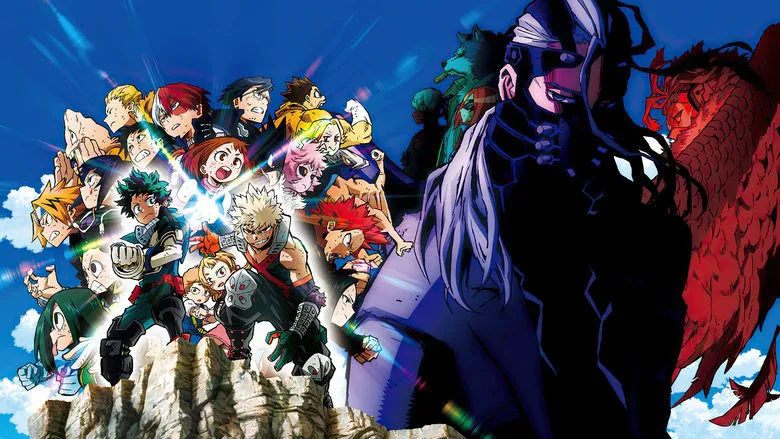
Heroes must have unique costumes!
The Importance of Effort: A Core Theme
“Friendship, Effort, Victory” are the famous three principles of Weekly Shonen Jump. Nishimura Shigeo, the third editor-in-chief, proposed that a series must meet at least one of these three points to be eligible for serialization. The manga of “My Hero Academia” focuses on the personal growth of Izuku Midoriya, with “effort” being his most powerful representation (friendship and victory elements will also appear later). “My Hero Academia” can be considered a traditional Shonen Jump work.
Overcoming the Aversion to Hard Work
“Friendship and victory are certainly not problems, but effort is the most hated thing for children.”
These words were spoken by Torishima Kazuhiko, who was in charge of editing “Dragon Ball” (original work by Toriyama Akira). Even so, “Dragon Ball” also has many plots that emphasize Goku’s efforts. We all understand what Torishima Kazuhiko is saying. Not only do children hate effort, but even adults are not interested in it. Although everyone dislikes effort, unlike children whose minds are not fully developed, adults repeatedly emphasize that “effort is the most important thing.” Protagonists who are already invincible from the beginning may be a necessity for viewers who hate effort.
Goku and Son Gohan training in the Hyperbolic Time Chamber
As a manga editor, Torishima truly understands the thoughts of manga readers. “Effort is indeed a helpless and realistic thing. Children are still young and unwilling to know such unpleasant things.” Even if you put in effort, your dreams will not necessarily come true. Rather, this situation is countless. You study hard for exams, and some pass while others fail. This is reality. Torishima believes that instead of letting children know the cruelty of reality and give up hope early, it is better to let them have dreams and explore their own future.
As time went by, during the era of the sixth editor-in-chief, Torishima Kazuhiko, Jump also faced serious sales problems. Regarding the “Friendship, Effort, Victory” policy, Torishima Kazuhiko proposed at this time, “These principles are now meaningless. It is very foolish to stick to this in the current situation.” As a dividing line, Jump also ushered in an era of greater tolerance for manga types and richer elements.
Today, not only the protagonists in Jump manga, but also Kirito from SAO, Tatsuya from The Irregular at Magic High School, and other similar anime protagonists who are in a godlike state from the beginning have frequently appeared before our eyes in recent years. In the currently prosperous light novel market, “invincible protagonists” have almost become a necessary condition for sales. Protagonists like Izuku, who sweat and work hard to become civil servants and train with all their strength, have become less common (laughs).
In the first half of the third episode of the anime, accompanied by a brisk English rap, Izuku receives physical training from All Might and puts in more effort in private than All Might imagined. On the morning of the civil service exam (laughs), Izuku finally completes all the training ahead of schedule. When Izuku shouts at the rising sun, every friend who knows the meaning of effort should like this somewhat uncool young man, just like Izuku’s teacher, All Might.
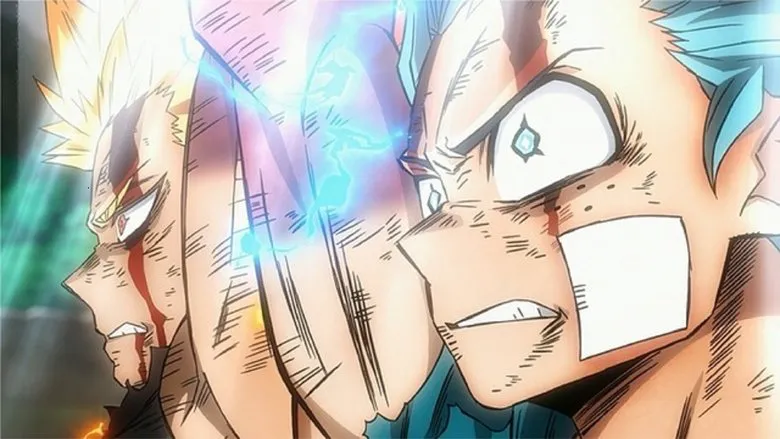
A shout at 6 a.m.
Inequality from Birth: A Harsh Reality
In the first episode of the anime, Izuku is just an ordinary person without any special abilities. He is ridiculed by classmates with other special abilities, and his mother even apologizes to him while crying. Although he has excellent grades, he is physically weak. For those who are heroes by profession, Izuku cannot be said to be behind the starting line, but rather that he is not qualified to race.
“Life is unequal from birth. This is the social reality I have known since I was 4 years old.”
As the protagonist of an “effort fantasy,” high school boy Izuku Midoriya is somewhat precocious psychologically. He has the belief to persist in his dreams, but also the inferiority of knowing that dreams are difficult to achieve. He does not like to attract attention and appears somewhat timid. He understands the ways of the world, but maintains his innocence in the face of dreams. In a society that values “Quirks,” he knows that he has been at the bottom since birth and clearly knows the gap between himself and his dreams. Regarding his dream of becoming a pro hero beyond All Might, Izuku’s personality makes him never ask for help from others, and he can only quietly work hard on his own.
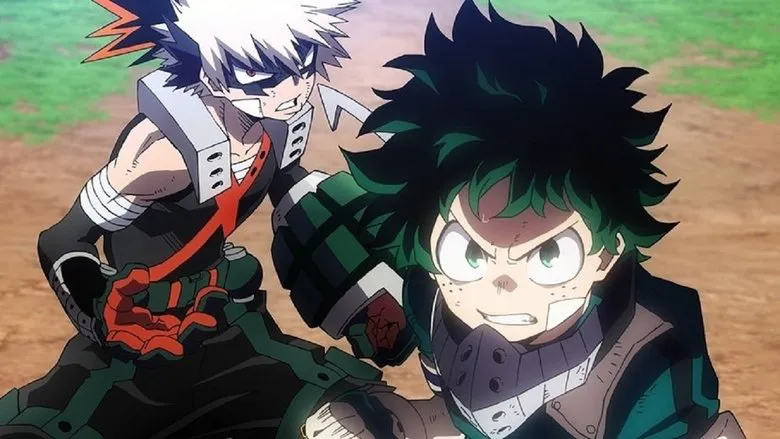
Izuku Midoriya is an introverted, timid, yet strong otaku
“Effort fantasies” have been staged in various forms and stories in various places in recent years, and can be said to be a very popular story type. For example, “Flying Colors,” which is also an “effort fantasy,” has also aroused widespread discussion due to the popularity of the film. The heroine, Sayaka Kudo, is fashionable, sweet, and cute, and has a generous and straightforward personality. Although her grades are at the bottom, she still has a group of friends who spend their student days together. Compared to the uncool, introverted otaku Izuku who has no friends, one can only sigh that there is no worst, only worse. Putting the two protagonists together, Sayaka’s setting is indeed more eye-catching, even if the story’s portrayal of Sayaka’s efforts is somewhat naive, it does not hinder the success of the film.
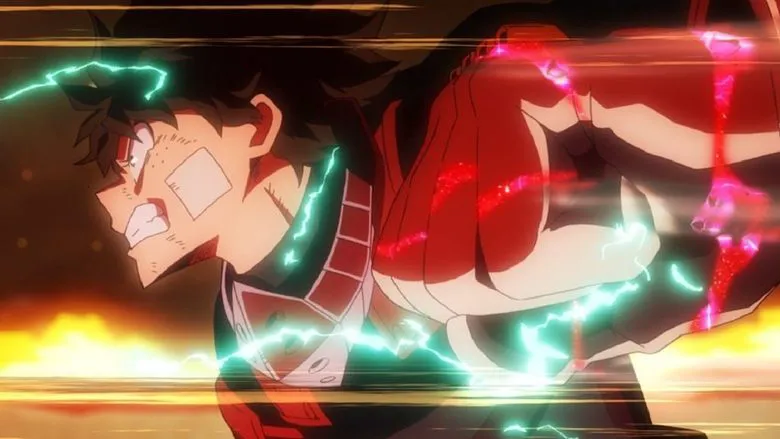
A poster full of eye-catching elements
A Slow-Burn Story: Izuku’s Journey
Izuku Midoriya, whose setting is very different from a group of “effort fantasies,” is likely to be cut off at any time if there is no breakthrough in the story. Friends who have been following the manga can also see that “My Hero Academia” has an extremely detailed portrayal of Izuku’s efforts. The manga often features powerful action stills without dialogue. Without character explanations, you can tell what happened from the picture alone. From the perspective of one episode of the manga, the viewing experience is quite direct. Since “My Hero Academia” is a story about Izuku Midoriya’s growth, the kind of reversal of priorities and ignoring the manga’s theme setting where characters suddenly become stronger after a period of training to promote the plot should never appear in this manga. This is also one of the reasons why “My Hero Academia” is a “slow burn.”
In the third episode, the menu that Mom posted on the refrigerator silently conveys her support for Izuku to the audience
However, the number of pages in each week’s manga is limited. Describing Izuku’s experience in too much detail will inevitably lead to insufficient descriptions of other characters in the manga. As a superpower battle manga set in a school, there are many characters appearing, and their abilities are different. Many very distinctive manga characters often only have a brief description. For example, the “Hero Academy Sports Festival” arc, which should have showcased the images of many characters and their battles using various abilities, also focused on Izuku’s description due to the manga author Kohei Horikoshi, ignoring other parts worth exploring, making readers feel that the “Sports Festival” arc was not satisfying. The climax should have been like a hasty ending. This also shows that Kohei Horikoshi has his limitations in mid-to-long stories.
From Manga to Anime: The Power of Dedicated Animators
Compared to the original manga, the anime’s portrayal of “simplicity” and “effort” can be described as profound. Currently, the anime has aired 5 episodes, maintaining a rhythm of telling a relatively complete story in each episode, with a certain amount of high-quality battle scenes. There is no deliberate procrastination or overly long explanation segments like in general Jump anime. It can be said that as long as you relax and watch, you can easily reap the emotions that the anime conveys to the audience.
This is inseparable from the excellent production of the anime, especially the combination of director Kenji Nagasaki, scriptwriter Yosuke Kuroda, and composer Yuki Hayashi, as if they were born for shonen anime. Their previous shonen anime work, “Gundam Build Fighters” (Gundam BF), was widely praised in 2013. Not only can Gundam fans get emotions from it, but friends who do not know Gundam can also get simple happiness from the anime. The anime discs and Gundam models were also a double harvest (the first season of the anime sold nearly 9,000 copies), which can be said to be a rare excellent work in Gundam anime that is suitable for all ages.
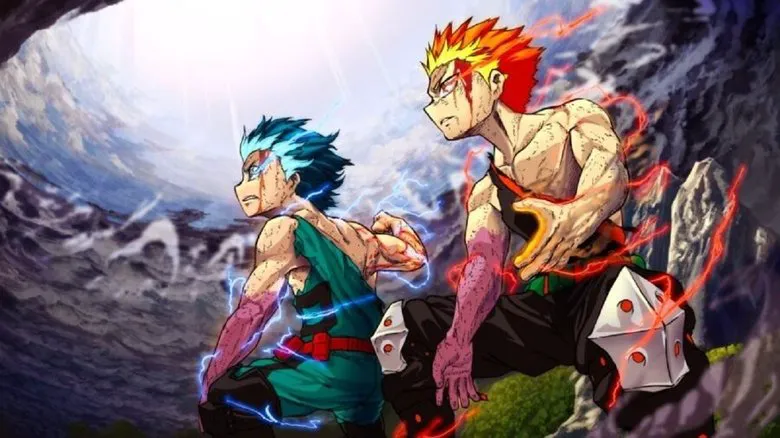
Playing with Gunpla is so much fun!
The reason why “Gundam Build Fighters” received countless praises from the audience while finding no shortcomings is that there is a wonderful Gundam battle in each episode. While dedicating to telling a small story in each episode, the simple love for Gundam is vividly displayed. Each episode is a double impact on the mind and vision. The music that you never get tired of listening to, the powerful and innovative battle scenes in each episode, and most importantly, the simple and serious love for Gundam that is conveyed are probably the most direct feelings of every audience who likes “Gundam Build Fighters.”
BACK-ON sang the OP for Gundam Build Fighters, and the lyrics are also suitable for Izuku
Kenji Nagasaki has repeatedly stated in interviews related to “Gundam Build Fighters” that he loves animation with all his life, and the scriptwriter Yosuke Kuroda is a well-known passionate man in the industry. Because of his hard work, there is even a legend that “Yosuke Kuroda” is actually more than one person, so that he later denied that the anime scripts were all created alone at the desk with painstaking efforts and all his efforts, and there is no second person. Yuki Hayashi, who is in charge of the music, also has a somewhat legendary experience. He was originally a Japanese male rhythmic gymnast, and he began to use computers to create music in his third year of studying law at Toyo University. A series of popular works such as “Legal High” and “Haikyu!!” are greatly related to him in terms of music.
It can be said that the three of them know how important simple love and effort are to a person’s growth. Perhaps it is because of the high compatibility of the three that there are works such as “Gundam Build Fighters” and “My Hero Academia” that convey the most simple and pure emotions to the audience.
Final Thoughts
“My Hero Academia” has aired 5 episodes so far. Every time I watch a new episode, I can’t help but recall the time in 2013 when I was waiting for each episode of “Gundam Build Fighters” to be updated. The habit of impatiently watching the first episode without skipping a minute, and then watching it two more times with emotion and passion, the feeling of being moved by simple emotions, and the feeling of tears for the unwavering persistence are still the same as in 2013.
If you ask if shonen anime is good? Of course it’s good! I hope you in front of the screen will also like the simple anime world of shonen!